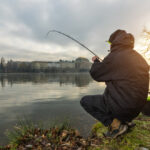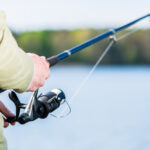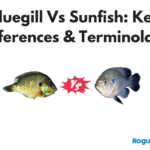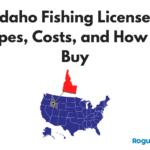A fishing leader is an essential piece of equipment for any angler, and they have many useful properties. It might sound like it would make sense to simply attach the hook to the end of the line instead of adding a leader and making things more complicated.
However, leader lines will be beneficial as they help decrease visibility in the water and make you more likely to get a bite. They can also help prevent any damage to the line, and different types of leaders are great for different purposes.
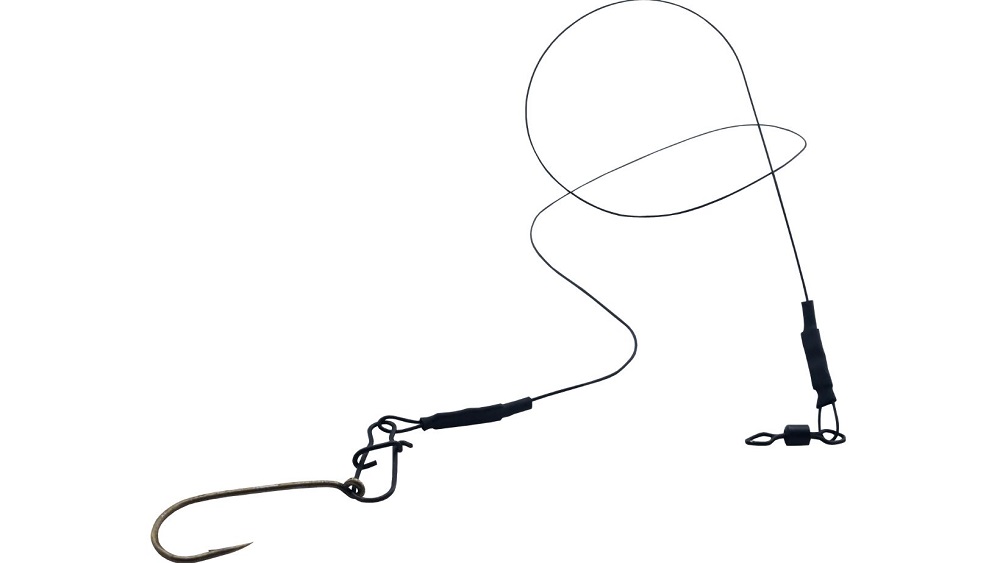
In this article, we will tell you everything that you need to know about fishing leaders, how they work, and the different types and varieties that you could get your hands on.
What is a Fishing Leader?
A fishing leader is a short and strong extra piece of fishing line that you can attach between the end of the main fishing line and the lure and hook. Fishing leaders are often overlooked, and many fail to see their importance. Although, they are probably the most important part of your fishing equipment.
Not only can fishing leaders help decrease the overall visibility in the water, but they can also work to protect you from a damaged or broken line. The fishing leader is less visible to the fish in the water than the normal line would be, and it is much stronger, which means that it is much less likely to break than your main fishing line would be. Leaders range in length from anywhere between 12-inches and 20-feet.
Knowing exactly how to use a leader line and what benefits it will bring you can help make a difference when fishing. Most importantly, you will need to know how to attach the leader properly, but we will explain more on this further.
Why Are Leader Lines Beneficial?
Using a leader line is one of the best ways to solve most problems you will face when you go out fishing. Before you start using leader lines, it can be helpful to know exactly what they can do to aid the fishing process.
Preventing Damage
You will often encounter while fishing that you will sometimes have to go deep down into the water to catch a specific type of fish. In some areas, these deeper waters can be home to sharp rocks and rough terrain, and these rocks could cause some damage to your line if it snags in them. There are also fish that have sharp teeth that can cut straight through your line.
You do not want these things to happen, and leader lines can help you avoid such a situation. The leader is designed to be much stronger than your line to withstand rougher conditions.
Avoiding Snags
If you are going fishing in rocky areas or places with a lot of vegetation in the water, then a problem that you can often encounter is getting snagged on debris. The majority of snags will occur because the hook will catch on a rock or area of vegetation by not jigging the rod hard enough.
The more that you fish, the more experience you will gain with avoiding this situation, but there are some things that you can do to get your hook free again. As you might have guessed, this involves the leader.
If you are in a situation where you are heading out into rocky or vegetated waters, then you can take some precautions that will make it more unlikely for the line to get caught.
To do this, you will need to make your leaders in a way that gets your hook off the ground, reducing your chances of getting snagged. A common fishing leader method for helping with this is the drop shot rig. The hook will be higher up than the weight, which will keep the hook from touching the ground, making it less likely to get stuck.
Reducing Visibility
You probably know about fish through your fishing journey that all fish will come at the bait differently. While some of them will jump at the chance when presented with the bait, others will investigate the situation before they go for the bait. Some fish will not go anywhere near the bait if they see that the fishing line is attached.
This means that you will need to provide the best possible bait presentation to ensure that you are putting off the fish. One of the best leader lines for lower visibility is a fluorocarbon leader line, and these are probably the best for these situations. If you are concerned about the presentation of your bait, then this type of line is probably the one to use.
Avoiding Line Twists
If you get a successful bite and the fish is on the hook, they will likely be thrashing around under the water, trying to break free. This will end up twisting your line as you reel it in, which can even weaken your fishing line to the point where it snaps. To avoid this twisting, you can use a swivel.
If you want to avoid this twisting of the line, then attaching your leader line to a swivel will be beneficial. You should do this before you tie it to your main fishing line, and the swivel will work in a way that allows the leader line to rotate without actually twisting the mainline.
Types of Leader Lines
Now that you know about all of the many benefits of using leader lines, we will go through some of the different types of leader lines that you can get.
Standard Monofilament Leader
Standard monofilament leaders are great because they use a single strand of strong and tightly spun lines, which absorb water. They are also highly resistant to abrasion; they can provide some stretch and even absorb sunlight.
One of the best things about these types of leader lines is the price, and they are quite low-cost compared to some of the other available options. In addition to this, they are flexible, so they are perfect for use in combination with a variety of different knots. The stretch they can provide will also help absorb some of the impacts of those more aggressive fish.
However, these leader lines also come with disadvantages, and since they absorb sunlight, they are known to deteriorate over time due to exposure to UV light. While the stretch is great at times, it can also make it harder to feel smaller bites.
Fluorocarbon Monofilament Leader
Similarly to the previous option, fluorocarbon leaders also use a single strand of monofilament, but they typically come at a higher cost as they are quite different. This type of leader is much less porous, has much less visibility, and stretches less.
Fluorocarbon leaders cannot stretch as much, making it much easier for you to feel smaller bites. These leaders are also highly resistant to abrasion, and they will provide you with excellent knot strength. What is great about these leaders is that they do not absorb water and will not deteriorate due to UV light.
Regarding the disadvantages of these lines, the only thing you need to consider is their price. They are slightly more expensive, and they have also been known to sink in water.
Wire Fishing Leader
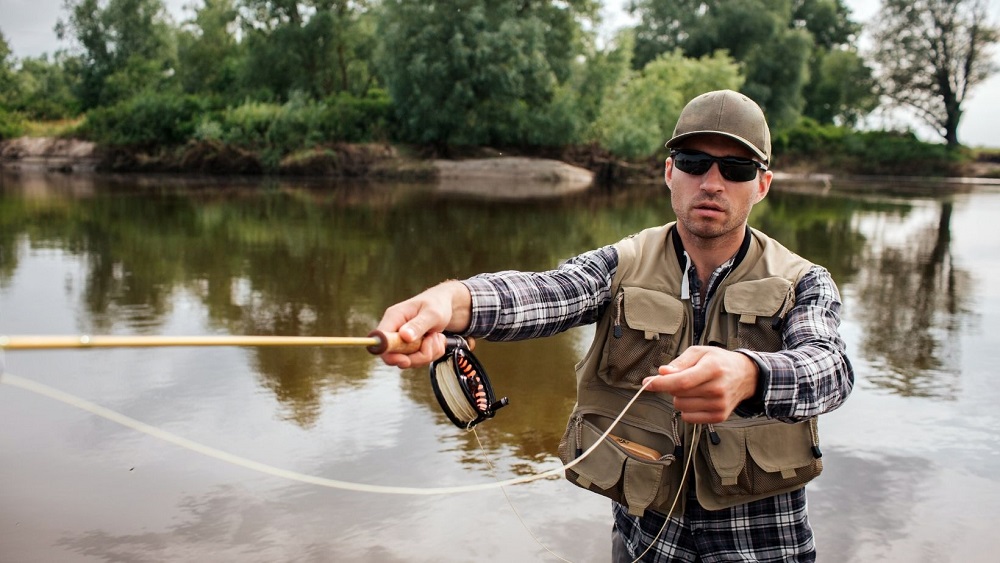
Wire fishing leaders will be available in various sizes and lengths, making them a great versatile option. You can purchase these leaders in single-strand, multi-strand, and knottable types. You should know about these leaders because they are more visible than other types, but they are really strong, especially if you try to catch bigger fish with sharper teeth.
How to Attach a Leader
Now that you know everything that there is to know about leader lines, it is time that you learn how to use one. We will give you the information that you need to attach a leader line below. There are many different methods available, and you should use whichever one works the best for you.
How to Tie An Albright Knot
An albright knot is one of the best knots you can use to attach a leader, and it is also one of the most reliable. To create this knot, just follow our instructions below.
The first step of tying this knot is to create a loop at the end of the heavier line and hold it in place with your thumb and forefinger. You will then need to thread about 10-inches of the lighter line through the loop.
Next, grab the end of the tighter line together with two heavier strands of the loop and tightly wrap the light line around ten times over the three strands towards the end of the loop. Now, thread the tag end of the lighter line through the bottom of the loop. The lighter line should both enter and exit from the same side of the loop.
When holding the heavier line, slide the wrapped lighter line towards the end of the loop and pull tightly on the strand of the lighter line and the ends of the heavier line. All that is left to do is rim the tag end of the lines to complete the knot.
